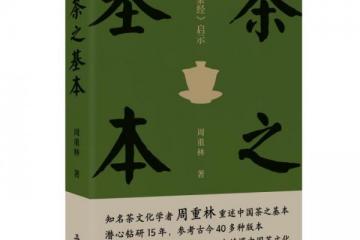CBNFridaySpecial丨RCEPhelpsspinstinkt
2023-06-03 09:52 来源:证券之星 阅读量:4557
It’s durian season, and online, Chinese durian lovers are sharing the fun experience of opening quot;durian blind boxes,quot; betting on the size of the durian flesh inside.
Those with full and rich flesh are called quot;repaying durians,quot; while those with shriveled flesh are called quot;revenge durians,quot; demonstrating the popularity of the fruit among Chinese people.
The tropical fruit, known for its putrid stink, green, large thorns or spikes and high-end price tag, is an indigenous fruit of Southeast Asia, but China is its biggest market, where cakes and pastries made with durian have deep roots in the nation’s cooking culture.
In fact, the fruit is ubiquitous in China quite recently. A few years ago, people who ate durian are mostly from South China. But now, Chinese consumers across the country, from south to north, from women to children, start to become huge fans of durians.
The enthusiasm has also been fueled by e-commerce platforms. From April 1 to mid-May, durian sales on Chinese food delivery platform Meituan surged 711 percent compared to the same period in 2022. Sales in Wuhan, Central China’s Hubei Province are up 20 times compared to 2022.
Living up to its reputation of “King of Fruits”, durian is the No 1 imported fruit into China. In 2022, China imported more than 824,000 tons of fresh durians, valued at more than US$4 billion. That was nearly four times the volume seen in 2017, and seven times the value, according to data from China#39;s General Administration of Customs , while between 2015 and 2022, imports of fresh durians to China grew at an aggregated annual rate of 17 percent.
In the first three months of 2023, China’s durian imports continued to increase sharply to 91,400 tons, worth $506.8 million, an increase of 154.3 percent in quantity and 124.6 percent in value compared with the same period 2022.
Durian is most popular among young people, with over 60 percent of the fruit in China being bought by consumers aged 16-35, and consumers are mainly concentrated in China#39;s first-tier cities, according to data released by JD Supermarket in November.
Durian is said to be one of the most expensive fruits in the world. In 2019, the most expensive durian ever sold was auction at $48,000.
This year, Chinese netizens have coined the term quot;durian libertyquot; to describe its not-so affordable price tag. So, what makes this pungent, spiky fruit so expensive?
First, the fruit is only grown in Southeast Asia, which means that it is not readily available in other parts of the world. Second, the fruit is very perishable, so it has to be shipped quickly and carefully, which adds to the cost. Finally, the most important reason, the high demand for durian means that growers can charge a premium for the fruit. By 2026, China#39;s durian market will be worth close to 130 billion yuan in retail sales, a report said.
Competiting for Chinese market
In July 2022, fresh Vietnamese durian was officially allowed to enter the Chinese market. In January 2023, the GAC began to allow the import of fresh durians from the Philippines. Currently, Thailand, Malaysia, Vietnam and the Philippines are the main suppliers of durian to China.
But for a long time, Thailand had been the absolute beneficiary of this fast-growing market, as only fresh durians from the country were allowed to be imported into China, while a smaller high-end market share was dominated by frozen durians from Malaysia. The dominance is being challenged in September, when Beijing approved 51 durian growers and 25 durian-packaging companies from Vietnam to export fresh crops to China.
Vietnam’s land border with China makes trade less difficult, which further enhances the competitiveness of its durians – of which the freshness is key to their quality.
The growing market potential for durian in China has pushed cities in Guangxi, which borders Vietnam, to beef up logistics to facilitate imports from its neighbor.
For example, Chongzuo, a border city in Guangxi, is building an advanced logistics centre with cold-chain storage and food-processing facilities to improve the import process, said the city’s development and reform bureau, as the first phase of investment will reach about 1.8 billion yuan and will be put into use by 2025.
The access enhancements will allow Vietnamese durians to reach all parts of China within one to three days, according to local officials and traders who expect durian consumption to further rise as a result.
Durian exports to China would be something big in Vietnam, not only because durian is a high-value export fruit, but also it signifies that China’s huge market is lifting its gate open for more imports of Vietnam’s agricultural products through official channels, not via informal border trade, experts noted. It would also help Vietnamese farmers – who account for a big portion of the country’s population – eye China as a potential market for other agricultural products.
The Philippines is also catching up fast. In less than four months, the Philippines became China’s third approved fresh-durian exporter. A local agriculture official said the industry is expected to generate about US$150 million in income during the first year of trade with China, along with 9,696 direct jobs and 1,126 indirect jobs.
A major importer, Dole Food Co, said that the production season of durian from the Philippines is from February to April and from August to October every year, which can make up for the market left open by the Thai durian.
Still, Thailand represented 96 percent of China#39;s durian imports by value and 95 percent of the total import volume in the past year, according to data provided from the China Chamber of Commerce for Import and Export of Foodstuffs, Native Produce and Animal By-Products .
While the majority of durians in the Chinese market are imported, homegrown ones are about to hit the market this June.
China is gearing up for the harvest of its first domestic durian crop this summer after more than four years of cultivation, although it is not expected to challenge Southeast Asia#39;s stranglehold on sales of the pungent smelling fruit.
About 2.45 million kilograms of durian produced on the tropical island of Hainan in southern China will go on sale in June, according to state broadcaster CCTV.
At the Durian Base in Sanya, 93.3 hectares of durian trees are bearing young fruit, with an estimated yield of 116.64 kilograms per hectare and an estimated output value of 6,665 yuan per hectare. It is aiming to construct a durian industrial estate spanning 3,333 hectares within the next three to five years, which is anticipated to generate an output value of 5 billion yuan by 2028.
RCEP boosts SE Asia#39;s agricultural exports
Durian is a fruit that can represent the identity of Southeast Asia, giving the durian trade more cultural and symbolic meanings, as it signifies the special relations between China and the region.
According to Dole Food Co, China is the third-largest durian consumer after Indonesia and Malaysia, and that China is expected to become the largest durian consumer by 2030.
The growth in durian imports has been helped by China#39;s growing trade links with Southeast Asia as access to the vast Chinese market has become easier for exporters in the region. Countries include Thailand, Vietnam, and the Philippines have stepped up efforts to expand into the Chinese market.
And the preferential tariffs and faster customs clearance under theRegional Comprehensive Economic Partnership, the largest global free trade agreement which entered effect in January 2022, and the deepening of the China-ASEAN Free Trade Agreement, have further added to the potential of the business.
Improved infrastructure and connectivity under the Belt and Road Initiative and RCEP also make the transportation of the fruit to China much easier for exporters, propelling the business.
A quot;fruit trainquot; carrying 23 containers of durian and mangosteen arrived in Kunming, Southwest China#39;s Yunnan Province in April, as Thai exporters increasingly turn to the China-Laos Railway for quick access to the Chinese market, Xinhua News Agency reported.
The transportation of durians is a race against time. Currently, goods can reach Kunming in three days after being transported along the China-Laos Railway from Thailand, where more mature durian fruit is exported.
An increasing number of agricultural products from the Association of Southeast Asian Nations have gained entry into the Chinese market.
For instance, Vietnam has managed to sharply increase sales of fruit and vegetables following a substantial increase in its formal exports of durian, mango, jackfruit, sweet potato and banana to China, said a local association of produce.
Among top foreign currency earners, including durian, dragon fruit and banana, durian exports are forecast to reach $1 billion this year. Vietnam#39;s fruit and vegetables would likely rise by about 20 percent to $4 billion this year as the country is expected to see exports to China widening to $2.5 billion, according to the Vietnam Fruit amp; Vegetable Association.
China is favoring Vietnamese agricultural products, and the market is increasingly demanding, said the Department of Crop Production under the Vietnamese Ministry of Agriculture and Rural Development, as China remained the biggest market for Vietnamese fruit and vegetables in the January-May period with $805 million worth of shipments.
Also, in 2022, a wide range of fruits worth $4.41 billion from Thailand were exported to China, with durian, mangosteen and longan being the top three, according to the Thai Ministry of Commerce.
这一届吃货,一部分在线下商超抢购“榴莲盲盒”,一部分蹲守在直播间,等着“3、2、1”开盲盒。
有关榴莲的话题,在各大热搜榜单上几乎没有下来过。涨价、降价、盲盒、“刺客”......诸多话题词拼凑出了一幅完整的榴莲消费图景。
榴莲盲盒,并非什么新鲜事物,其实就是“整颗买榴莲”。因为从外表无法准确地识别出,榴莲内究竟有几房肉、肉又有多大,因而这看似普通的消费方式,具备一定的随机性、惊喜感,也诞生了所谓“报恩榴莲”“报仇榴莲”这样的网络热梗——前者比喻果肉饱满的榴莲,后者刚好相反。
生鲜电商平台也适时推出了榴莲盲盒产品,甚至上线了榴莲促销季活动,从供给、价位、品质把控、配送时效等方面满足网友“开盲盒”需求。4月初到5月中旬,美团买菜上的榴莲销量增长非常明显,对比去年同期整体增长在711%左右,其中上海、武汉两地的销量,对比去年更是增长达40倍和20倍以上。
叮咚买菜也同样销情火爆。相较去年,今年叮咚买菜调整了榴莲的品类结构,主打高品质的马来西亚树熟猫山王,销量上来看,今年1—5月份叮咚买菜马来西亚树熟猫山王销量相较于去年增加了近20倍。
此外,如今餐饮市场里烤榴莲、榴莲蛋糕、咖啡、奶茶层出不穷……榴莲制品的走俏,本身也是榴莲作为水果的热度上升的侧写。
这一届爱玩榴莲盲盒的年轻人,也渴望实现“榴莲自由”。
榴莲是我国进口额最大的水果。从2017年至今,我国榴莲的进口量、进口额都稳定上升。2017年年进口量还仅为22.44万吨,而到了2021年,这一数字已达到82.15万吨,翻至近四倍。
今年中国进口的榴莲量是远超往年。据中国海关总署数据,2023年第一季度,全国进口鲜榴莲一共9.1万吨,是近五年同期进口数量最高的一年,甚至超过疫情暴发前的2019年第一季度的8万吨。2023年4月份,由于逐渐接近夏季,全国进口鲜榴莲一共22.07万吨,远超2019年4月份的12.7万吨。
供不应求,价格就会上升。前阵子,“榴莲涨价”的话题上了热搜,各地消费者根据对当地榴莲价格情况的观察,得出榴莲变贵的结论。而从宏观数据来看,榴莲确实变贵了。
广州江南市场是亚洲最大的果蔬交易市场,全国几乎一半左右的进口水果交易都发生在这里。从广州江南市场近期发布的价格指数来看,泰国进口榴莲批发均价的最低行情出现在4月25日,为40.59元/公斤;而在5月5日—5月11日,泰国进口榴莲的均价上涨到45元/公斤左右。
电商平台上,榴莲价格也有所抬升。目前,天猫超市的泰国金枕榴莲6—7斤装售价为239.9元,7—8斤是279.9元。有网友反映,比半个月前的定价均贵了20元左右。
客观来看,榴莲价格受季节、物流、汇率等多方因素影响。专家解释,四月份是泰国榴莲的大规模上市期,供给充分,商家出货积极,价格因此较低。而五月中旬以来接近泰国榴莲东部产区的尾季,产能收缩,商家放缓销售节奏,价格自然会有所回升。而站在更长的时间周期上,榴莲的价格整体是上行的,因为国内消费者对榴莲的消费需求也一直在上升,榴莲“热带水果之王”称号可谓当之无愧。
RCEP红利助推榴莲贸易
6月2日,也就是今天,RCEP对菲律宾正式生效,补全了最后一块“拼图”。这标志着RCEP对15个成员国全面生效,全球最大的自贸区将进入全面实施的新阶段。《区域全面经济伙伴关系协定》,也就是RCEP,是全球人口最多、成员结构最多元、经贸规模最大、最具发展潜力的自贸协定。
得益于RCEP的生效实施、通关流程和物流运输管理优化等利好条件,榴莲正迅速成为中国市场上最受欢迎的进口水果之一,榴莲销售持续走热为大批服务于水果进口及零售的商家带来新机遇。东盟国家,特别是越南,对华榴莲供应量增幅可观,市场普遍预期中国与东盟国家水果贸易前景将更加广阔。
全世界范围内,今年以来泰国榴莲的份额也减少了3.9%,其竞争国主要为马来西亚、菲律宾和越南。
2022年7月,中国海关总署发布公告,允许符合相关要求的越南鲜食榴莲进口。2023年1月7日海关总署又发布公告,允许符合相关要求的菲律宾鲜食榴莲进口。4月7日,第一批菲律宾榴莲空运抵达上海,这意味着菲律宾新鲜榴莲对华出口的正式启动。4月20日,海运的榴莲也抵达中国市场。
目前,中国已成为仅次于印度尼西亚和马来西亚的全球第三大榴莲消费国。在以中高收入家庭是消费主力的“追捧”下,榴莲进口量赶超原来的“顶流水果”车厘子。
对消费者来说是好事。过去,谈榴莲必说“金枕”,这是泰国的代表品种,也一度成为榴莲的代名词。但今年以来,多名榴莲市场从业者表示,菲律宾的普雅、越南的干尧都已进入了中国市场,且品质不错。
据介绍,2022年,中国进口的榴莲中有78万吨来自泰国。一位中国水果零售商解释说,“泰国榴莲很贵,但更美味、更饱满,而越南榴莲因为其价格便宜迅速受到欢迎。”随着来自越南和东南亚其他国家的榴莲进口量不断攀升,泰国榴莲在中国市场上的主导地位开始受到挑战,马来西亚和菲律宾也希望扩大对华榴莲出口。
对榴莲产地来说,这是生意分流。但对消费者而言,竞争带来的供给的丰富与多元,让榴莲的品质更稳定,最主要的让产地们把榴莲价格“打下来”。今后,RCEP将进一步推动榴莲贸易的发展,通过全球规模最大的自由贸易协定达成的交易或将使印尼等东盟国家成为中国的主要榴莲供应国。
值得一提的是,榴莲巨大的市场需求推动国产榴莲发展,《2023-2029年中国榴莲行业市场供需规模及投资前景预测报告》中提到,近年来海南榴莲产业化发展初具规模。2024年海南榴莲有望批量上市,年供应能力达到4.5万吨—7.5万吨,随着海南榴莲产业化的推进,国内榴莲自给率有望提升。
据三亚市农业农村局介绍,未来,三亚计划要种植5万亩榴莲。按照亩收3500斤计算,未来5万亩的产能或将达到8万吨。这对于我国的榴莲供给端来讲,是不小的补充。
进口品种丰富中国人的“果篮子”
享受到RCEP红利的当然也不仅是榴莲贸易。从柬埔寨龙眼,到越南百香果,再到菲律宾榴莲,越来越多周边国家的水果走进中国市场,摆上了中国消费者的餐桌。这背后都离不开RCEP的助推。
RCEP区域是全球重要的农业生产地,汇聚了全球主要的大米、棕榈油、橡胶、水产品等生产地。2022年1月1日,RCEP正式生效。标志着区域内90%以上的货物贸易将逐步实现零关税。协定生效一年多来,中国与RCEP成员国之间的农产品贸易热火朝天。
据官方数据,2022年中国与RCEP14个成员国进出口12.95万亿元人民币,同比增长7.5%,占中国外贸进出口总值的30.8%。与此同时,贸易便利化水平提升,带动区域内跨境物流网络提质升级,加速了产业链供应链融合。
对东盟国家农产品商户而言,RCEP生效的重大利好在于关税降低带来进口成本下降和出口机遇增多。对于中国消费者而言,跨境贸易的便利化意味着更多元的选择和更便捷的消费。
今年榴莲的大量上新,还得益于“一带一路”标志性工程——中老铁路的运输保障。
自从泰国榴莲搭上了中老铁路的“快车”,运输到中国的时间大大缩短。以前通过海运需要大约7天时间、公路运输大约5天,自从有了中老铁路,榴莲从泰国运到中国昆明只需3天。泰国媒体报道,从泰国玛达普站开往中国广州的“榴莲班列”,已打破从泰国运输水果至中国所需时间的最快纪录,运输途中损耗的概率也显著降低。
物流效率、冷链工艺的提升,使得榴莲在国内的供给愈加充分了起来。中老铁路的开通为泰国榴莲出口提供了更便捷的运输方式,从而增加了榴莲的供应量并降低了运输成本,对榴莲销量的增长起到了促进作用。
同样,在老挝万象,满载着榴莲、龙眼、椰青等夏季时令水果的专列从万象火车站发车,经中老铁路入境后通过冷链集装箱运抵成都、重庆,再集散发往各地。这条跨境通道的顺利打通,可将运输时效提升一倍以上,大大缩短跨境水果运输的时间并降低成本。
截至今年6月1日,中老铁路累计运输进口水果2.3万吨,货值约5.6亿元,大大丰富了中国家庭的“水果篮子”。据了解,今年中老铁路进境热带水果运输旺季将持续至6月底,预计今年榴莲、山竹、龙眼等东南亚热带水果运量有望突破3万吨。
Executive Editor: Sonia YU
Editor: LI Yanxia
Host: Stephanie LI
Writer: Stephanie LI
Sound Editor: Stephanie LI
Graphic Designer: ZHENG Wenjing, LIAO Yuanni
Produced by 21st Century Business Herald Dept. of Overseas News.
Presented by SFC
编委: 于晓娜
策划、编辑:李艳霞
播音:李莹亮
撰稿:李莹亮
音频制作:李莹亮
设计:郑文静、廖苑妮
21世纪经济报道海外部 制作
南方财经全媒体集团 出品
声明:本网转发此文章,旨在为读者提供更多信息资讯,所涉内容不构成投资、消费建议。文章事实如有疑问,请与有关方核实,文章观点非本网观点,仅供读者参考。
为您推荐
精彩放送
热门文章
-
工信部:2023年1—4月我国规上互联网企业完成互联网业务收入4083亿
-
天猫618品效双收,交出一份高分答卷
-
《人才趋势2023》报告发布:薪资依旧是主导员工离职及求职主要因素
-
高达3.6万亿token,PaLM2训练数据翻5倍,全新Bard对比Ch
-
Win10、Win11学院:如何在Edge浏览器上启用鼠标手势
-
NASA:波音Starliner太空舱7月21日进行第一次载人飞行测试,
-
报告称三星GalaxyS23Ultra手机物料成本469美元,占比售价3
-
手机芯片为啥这么烧钱
-
英特尔MeteorLake-P早期ES处理器亮相,CinebenchR2
-
2499元,摩尔线程MTTS70国产独立显卡上市:3584MUSA核心、








